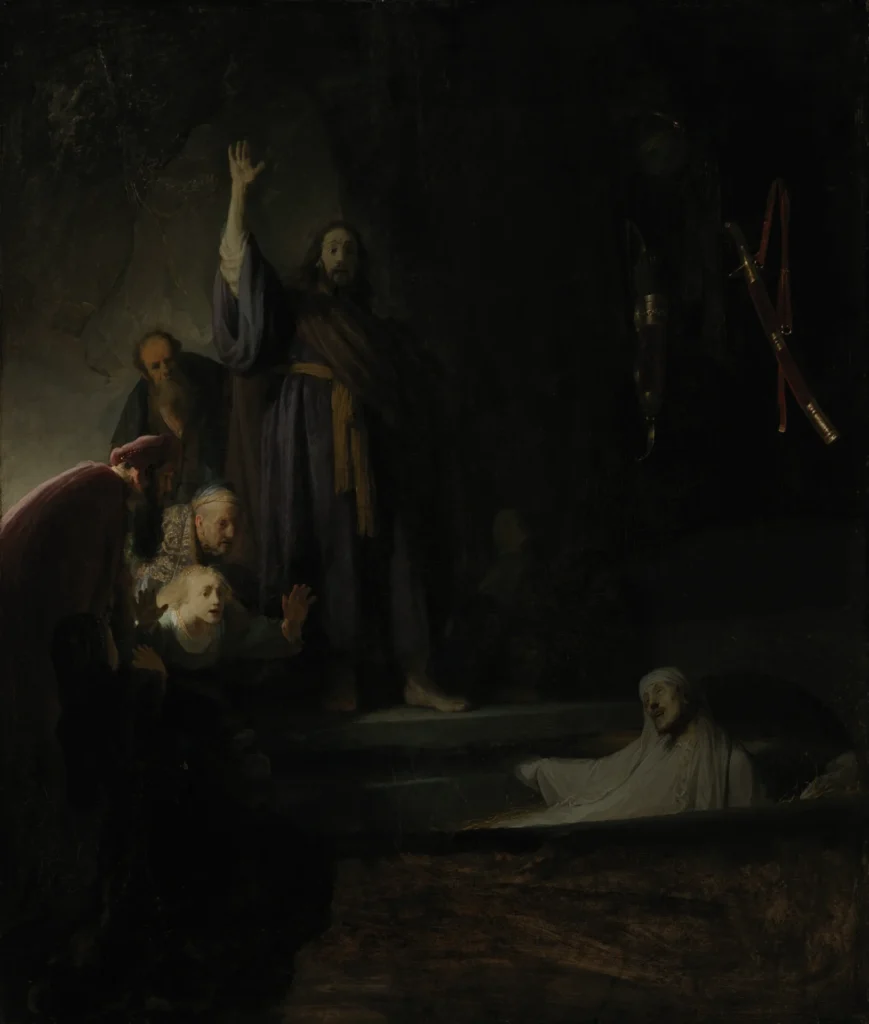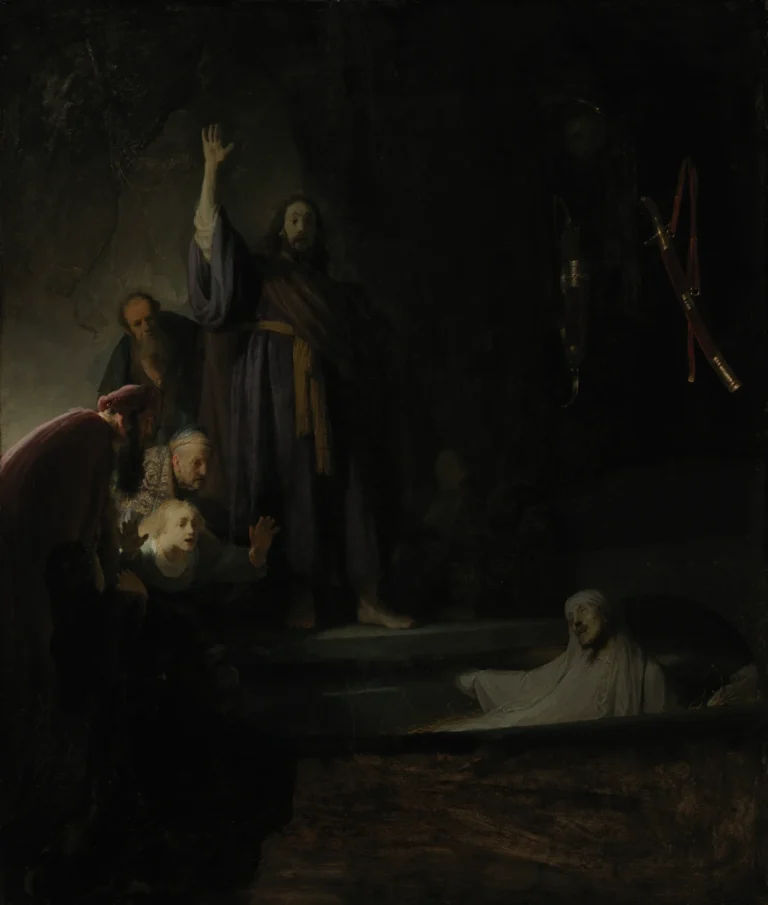The Raising of Lazarus
This artwork by Rembrandt van Rijn vividly illustrates the biblical scene of Lazarus’ resurrection as described in the Gospel of John. Created during his early career, the oil-on-panel painting showcases dynamic contrasts of light and shadow, with Christ illuminated as he calls forth Lazarus from his tomb. The moment is fraught with tension—the juxtaposition of the brightly lit figures against the somber backdrop mirrors the drama of life triumphing over death. Rembrandt’s innovative approach to composition reflects his artistic development and his ability to convey powerful narratives through visual means.
1630-1632
About the Artwork
The Raising of Lazarus encapsulates one of the most dramatic episodes from the New Testament, wherein Jesus Christ resurrects Lazarus, who had been dead for four days. Rembrandt created this iconic scene at a pivotal moment in his career, highlighting his fascination with light and shadow to evoke profound emotional responses. The painting was part of several works on this theme, demonstrating not only Rembrandt's commitment to biblical storytelling but also his experimentation with form and technique. Following his bankruptcy in 1656, the painting changed hands several times before finally being acquired by the Los Angeles County Museum of Art, where it continues to inspire and engage audiences with its spiritual depth and artistic prowess.
Did You Know
Liked what you see? Add it to your collection.
Enjoyed reading? Share it.
... continued
Painting (1630-1632)
The painting, one of Rembrandt's early works, is an oil-on-panel piece created between 1630 and 1632 while he was still in Leiden. It depicts the moment when Lazarus rises from his tomb as Christ calls him. The painting uses chiaroscuro, contrasting light and dark, to emphasize the dramatic moment. Christ and the figures to his left are illuminated, while Lazarus is in the darker part of the painting, creating a sense of tension and anticipation. The work is now part of the collection at the Los Angeles County Museum of Art.
Etchings
Early Etching (1632)The first etching, created around 1632, is highly dramatic and features a dark, cavelike tomb. Christ is shown with his back to the viewer, raising his hand in a gesture of command as Lazarus emerges from the grave. This etching is characterized by its use of light and shadow, highlighting Lazarus' resurrection and Christ's central role in the scene.
Later Etching (1642)The second etching, from 1642, presents a simpler and more restrained interpretation. Here, the scene is set outdoors in a landscape flooded with daylight, and the stone slab of the tomb has been moved aside. Christ's gestures and those of the onlookers are more subdued, and the emphasis is on the landscape and the contrast between light and shadow. This etching suggests a more everyday and natural portrayal of the miracle.
Composition and Influence
Both the painting and etchings show Rembrandt's mastery of composition and his ability to convey emotional depth. The works were influenced by his apprenticeship under Pieter Lastman and possibly by an undated etching by Jan Lievens, a friend and fellow artist. The composition of the painting may have also influenced his later work, "The Resurrection," created between 1635 and 1639.
Provenance
The painting was owned by Rembrandt for most of his life and was sold in his bankruptcy sale in 1656. It passed through various owners in Europe before being purchased by Howard F. Ahmanson, Sr. in 1959 and subsequently donated to the Los Angeles County Museum of Art.
These works by Rembrandt not only illustrate his technical skill but also his deep interpretation of biblical themes, making The Raising of Lazarus one of his significant and enduring creations.










